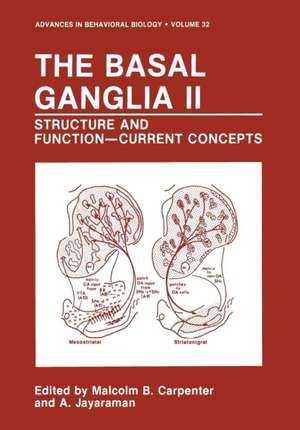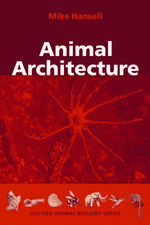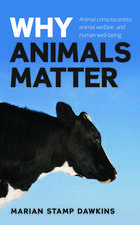The Basal Ganglia II: Structure and Function—Current Concepts: Advances in Behavioral Biology, cartea 32
Editat de Malcolm B. Carpenter, A. Jayaramanen Limba Engleză Paperback – 22 mar 2012
Din seria Advances in Behavioral Biology
- 5%
 Preț: 368.00 lei
Preț: 368.00 lei -
 Preț: 401.79 lei
Preț: 401.79 lei -
 Preț: 406.63 lei
Preț: 406.63 lei - 15%
 Preț: 649.54 lei
Preț: 649.54 lei -
 Preț: 387.20 lei
Preț: 387.20 lei -
 Preț: 405.28 lei
Preț: 405.28 lei -
 Preț: 381.43 lei
Preț: 381.43 lei - 5%
 Preț: 378.07 lei
Preț: 378.07 lei - 5%
 Preț: 372.76 lei
Preț: 372.76 lei - 5%
 Preț: 724.50 lei
Preț: 724.50 lei - 5%
 Preț: 668.50 lei
Preț: 668.50 lei - 5%
 Preț: 378.97 lei
Preț: 378.97 lei - 15%
 Preț: 672.62 lei
Preț: 672.62 lei -
 Preț: 385.08 lei
Preț: 385.08 lei - 15%
 Preț: 673.27 lei
Preț: 673.27 lei -
 Preț: 407.39 lei
Preț: 407.39 lei - 5%
 Preț: 713.75 lei
Preț: 713.75 lei - 5%
 Preț: 716.84 lei
Preț: 716.84 lei - 5%
 Preț: 372.59 lei
Preț: 372.59 lei - 15%
 Preț: 680.47 lei
Preț: 680.47 lei - 15%
 Preț: 687.19 lei
Preț: 687.19 lei - 15%
 Preț: 596.01 lei
Preț: 596.01 lei -
 Preț: 421.05 lei
Preț: 421.05 lei - 15%
 Preț: 661.65 lei
Preț: 661.65 lei - 15%
 Preț: 663.27 lei
Preț: 663.27 lei - 5%
 Preț: 402.17 lei
Preț: 402.17 lei - 5%
 Preț: 369.29 lei
Preț: 369.29 lei -
 Preț: 409.30 lei
Preț: 409.30 lei -
 Preț: 386.00 lei
Preț: 386.00 lei - 15%
 Preț: 646.62 lei
Preț: 646.62 lei -
 Preț: 403.15 lei
Preț: 403.15 lei -
 Preț: 397.59 lei
Preț: 397.59 lei -
 Preț: 406.63 lei
Preț: 406.63 lei - 5%
 Preț: 756.15 lei
Preț: 756.15 lei - 5%
 Preț: 406.57 lei
Preț: 406.57 lei - 15%
 Preț: 638.11 lei
Preț: 638.11 lei - 5%
 Preț: 389.93 lei
Preț: 389.93 lei - 5%
 Preț: 392.13 lei
Preț: 392.13 lei - 5%
 Preț: 719.74 lei
Preț: 719.74 lei -
 Preț: 389.49 lei
Preț: 389.49 lei - 5%
 Preț: 2147.36 lei
Preț: 2147.36 lei - 5%
 Preț: 1424.68 lei
Preț: 1424.68 lei - 5%
 Preț: 1430.35 lei
Preț: 1430.35 lei - 5%
 Preț: 2124.15 lei
Preț: 2124.15 lei
Preț: 660.18 lei
Preț vechi: 776.67 lei
-15% Nou
Puncte Express: 990
Preț estimativ în valută:
126.34€ • 137.19$ • 106.13£
126.34€ • 137.19$ • 106.13£
Carte tipărită la comandă
Livrare economică 22 aprilie-06 mai
Preluare comenzi: 021 569.72.76
Specificații
ISBN-13: 9781468453492
ISBN-10: 1468453491
Pagini: 564
Ilustrații: 548 p.
Dimensiuni: 178 x 254 x 30 mm
Greutate: 0.97 kg
Ediția:Softcover reprint of the original 1st ed. 1987
Editura: Springer Us
Colecția Springer
Seria Advances in Behavioral Biology
Locul publicării:New York, NY, United States
ISBN-10: 1468453491
Pagini: 564
Ilustrații: 548 p.
Dimensiuni: 178 x 254 x 30 mm
Greutate: 0.97 kg
Ediția:Softcover reprint of the original 1st ed. 1987
Editura: Springer Us
Colecția Springer
Seria Advances in Behavioral Biology
Locul publicării:New York, NY, United States
Public țintă
ResearchCuprins
Chem?cal Neuroanatomy of the Basal Ganglia.- Chemical Anatomy of the Basal Ganglia in Primates.- GABA and Enkephalin Immunoreactivity in Monkey Neostriatum.- Organization of Peptidergic Afferents to the Striatum.- The Neostriatum Mosaic: Compartmental Organization of Mesostriatal Systems.- The Development of Striatal Compartments: From Proliferation to Patches.- Somatostatin-Dopamine Interactions in the Rat Striatum.- Application of in Vivo Electrochemistry to Cholecystokinin-Dopamine Interactions in the Ventral Striatum.- Neuropharmacology of the Striatum and Substantia Nigra.- Role of D1 and D2 Dopamine Receptors in the Mammalian Striatum: Electrophysiological Studies and Functional Implications.- Dopamine Control of Excitability Changes in Nigrostriatal Terminals.- Modulation of Striatal Dopamine System by Thyrotropin-Releasing Hormone and Cyclo (His-Pro).- Cyperquat (MPP+), but not MPTP or Paraquat Inhibits Oxygen Consumption in Mitochondria from Rat Striatum.- Benzodiazepine Receptors in the Striatum of the Human Brain.- Neurotransmitters in the Basal Ganglia and Motor Thalamus: Their Role for the Regulation of Muscle Tone.- Anatomy and Physiology of the Striatum, Pallidum and Relate Nuclei.- Spatial Organization and Information Processing in the Core of the Basal Ganglia.- Age-Related Dendritic Changes of Spiny and Aspiny Neurons in the Rodent Striatum.- Boundaries and Connections of the Ventral Pallidum in Rat and Monkey with Reference to Man.- Growth Factors in the Basal Ganglia.- On the Basal Ganglia of a Reptile: the Lizard Gekko Gecko.- The Detailed Morphology of the Cortical Terminals of the Thalamocortical Fibres from the Ventromedial Nucleus in the Rat.- Recent Research on the Centromedian and Parafascicular Nuclei.- A Demonstration of Tonic Inhibitoryand Facilitatory Striatal Actions on Substantia Nigra Neurons.- Motor Responses to GABA-ergic Interference in the Rat Entopeduncular Nucleus in Relation to Rotation Mechanisms.- The Putamen Neuron: Activity and the Association of a Sensory Stimulus with Movement in the Monkey.- Neuronal Activity in the Ventral Striatum of the Primate.- Anatomy and Physiology of the Subthalamic Nucleus: A Driving Force of the Basal Ganglia.- Animal Models of Basal Ganglia Disorders.- Basal Ganglia Mechanisms Mediating Experimental Dyskinesia in the Monkey.- New Parallels Between Parkinson’s Disease and MPTP-Induced Parkinsonism in the Monkey.- MPTP Parkinsonism in the Cat: Pattern of Neuronal Loss May Partially be Explained by the Distribution of MAO-B in the Brain.- Altered Tonic Activity of Neurons in the Globus Pallidus and Subthalamic Nucleus in the Primate MPTP Model of Parkinsonism.- Integration of Motor Functions in the Basal Ganglia.- Weaver — A Mutant Gene that Affects the Basal Ganglia.- Effects of MPTP on Nigrostriatal and Mesolimbic Dopaminergic Systems in Young and Aged Mice.- Basal Ganglia Disorders in Man.- Two Groups of Extrapyramidal Involuntary Movements.- Regression of Striatal Dendrites in Parkinson’s Disease.- Activity of Caudate Neurons in Humans.- Roles of the Basal Ganglia and Related Structure in Symptoms of Dystonia.- Far-Field Somatosensory Evoked Potentials in Huntington’s Disease.- Huntington’s Disease: Neuropathological Grading.- Participants and Contributors to the Symposium.
















